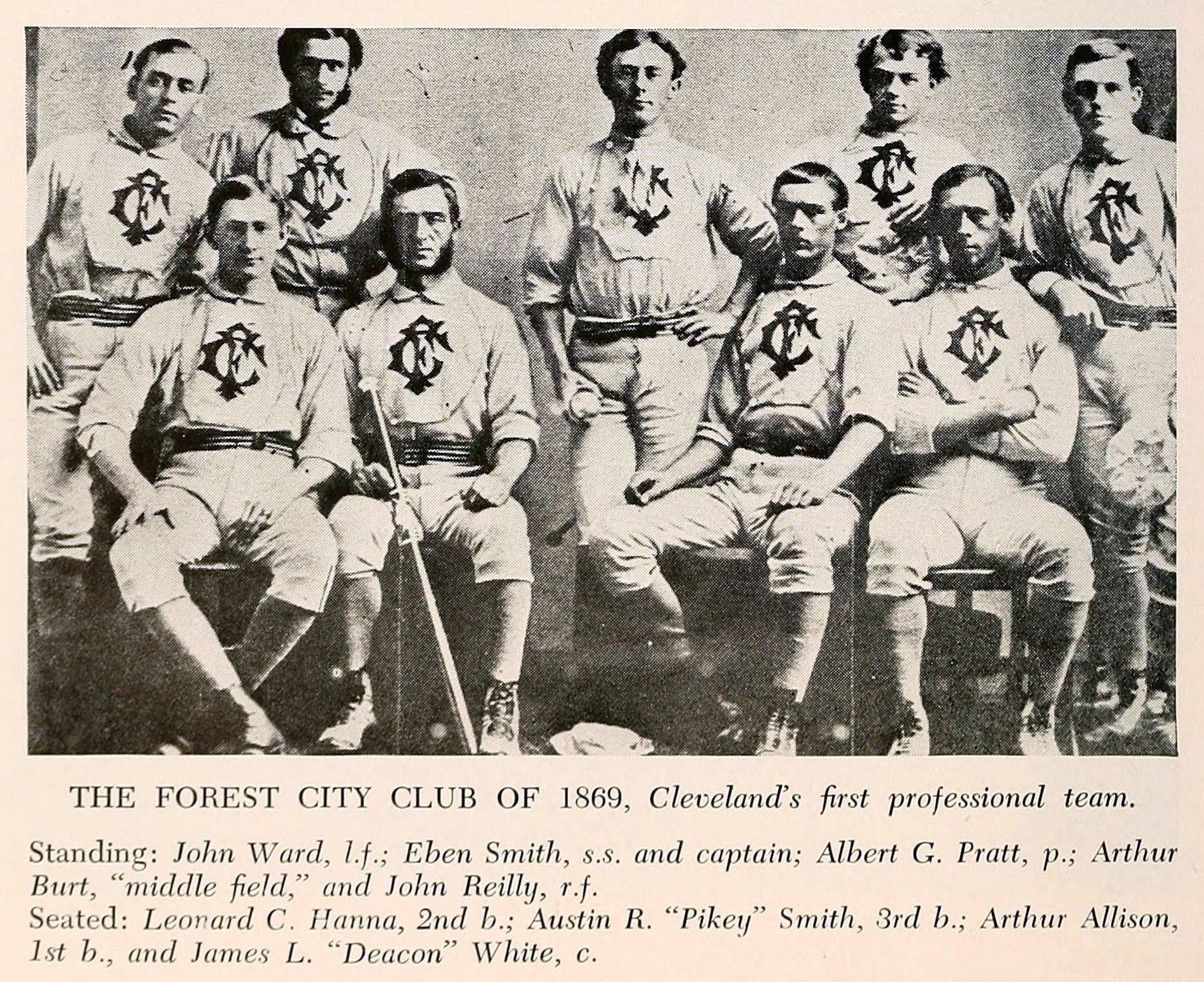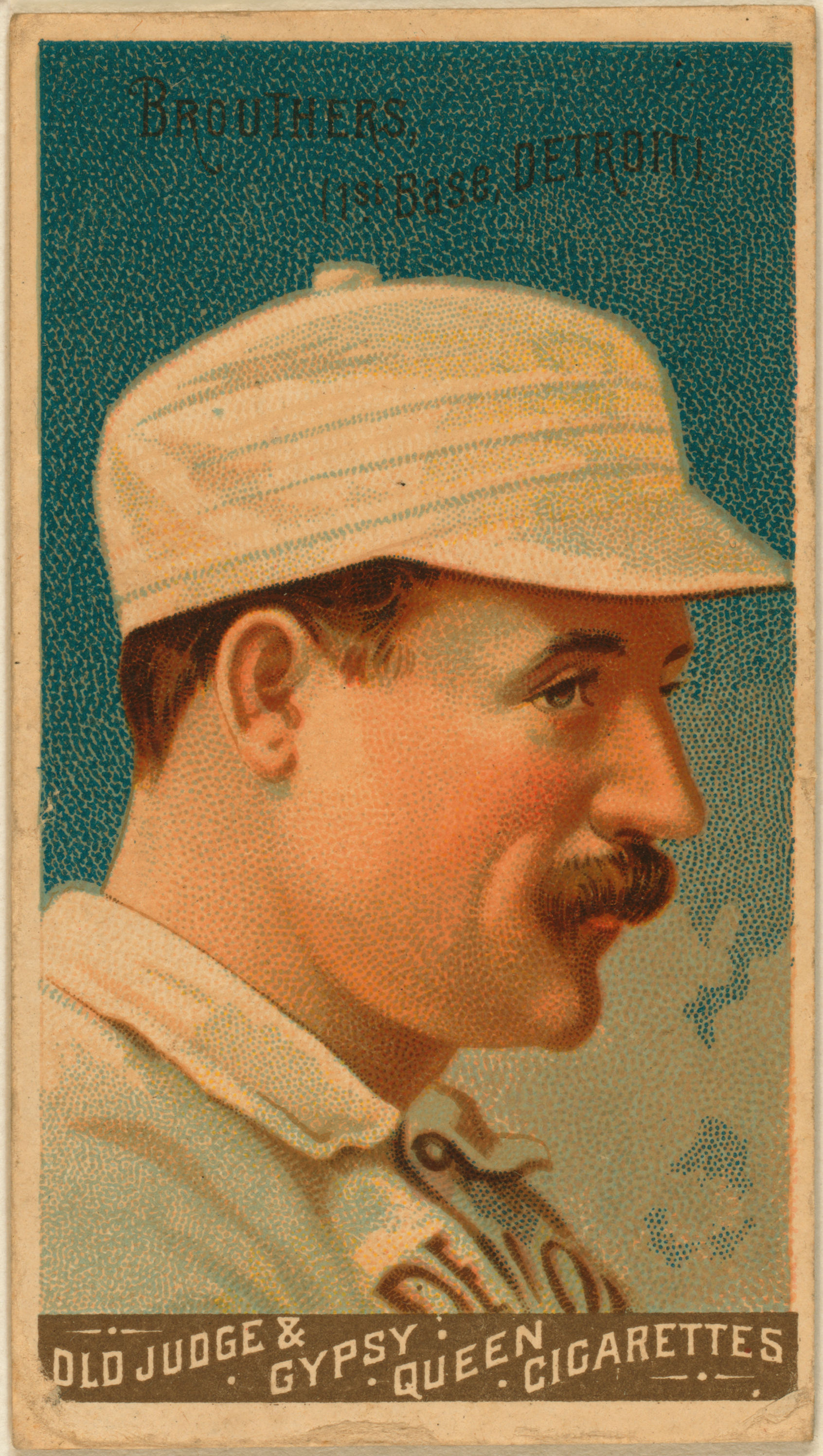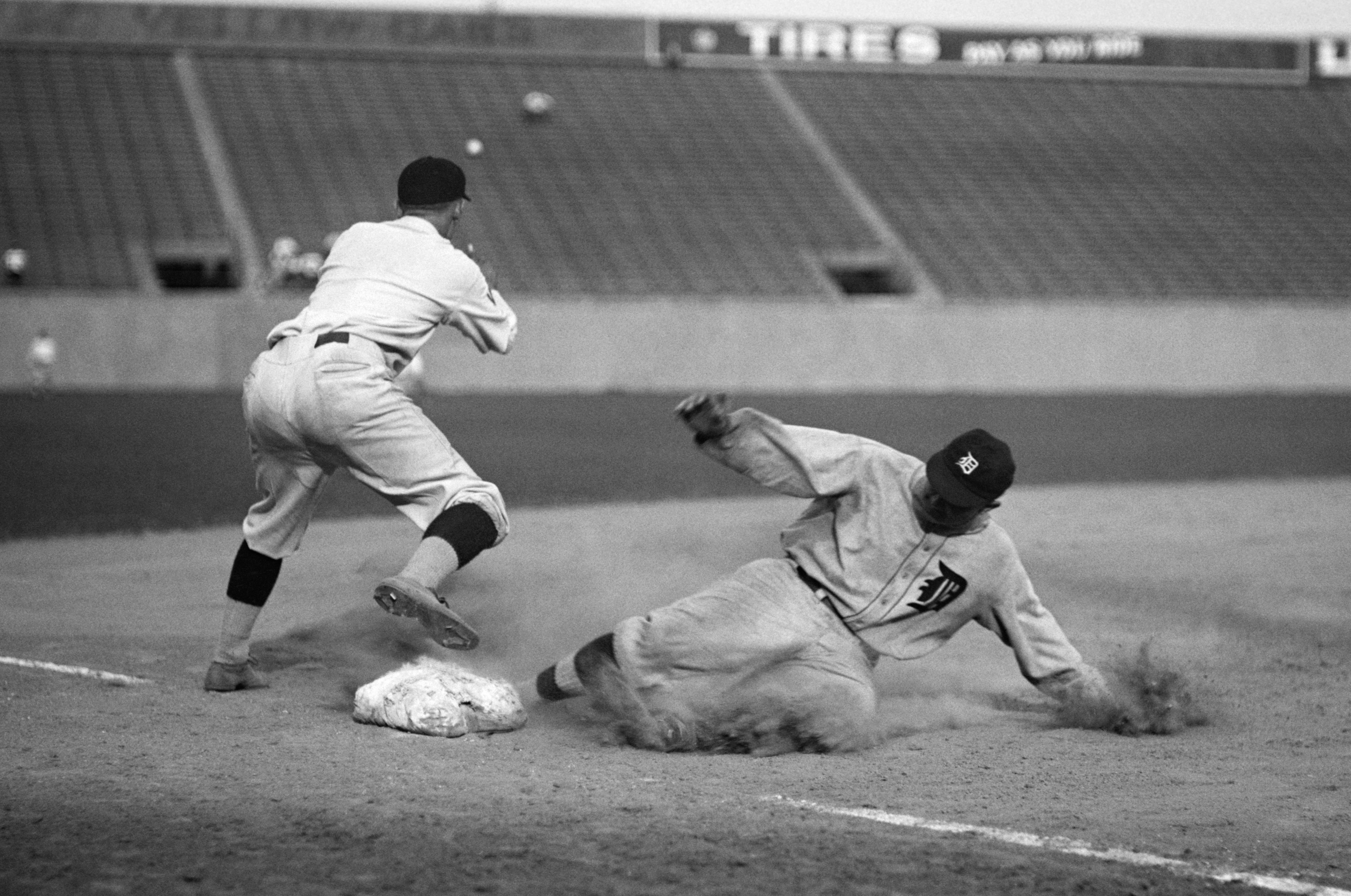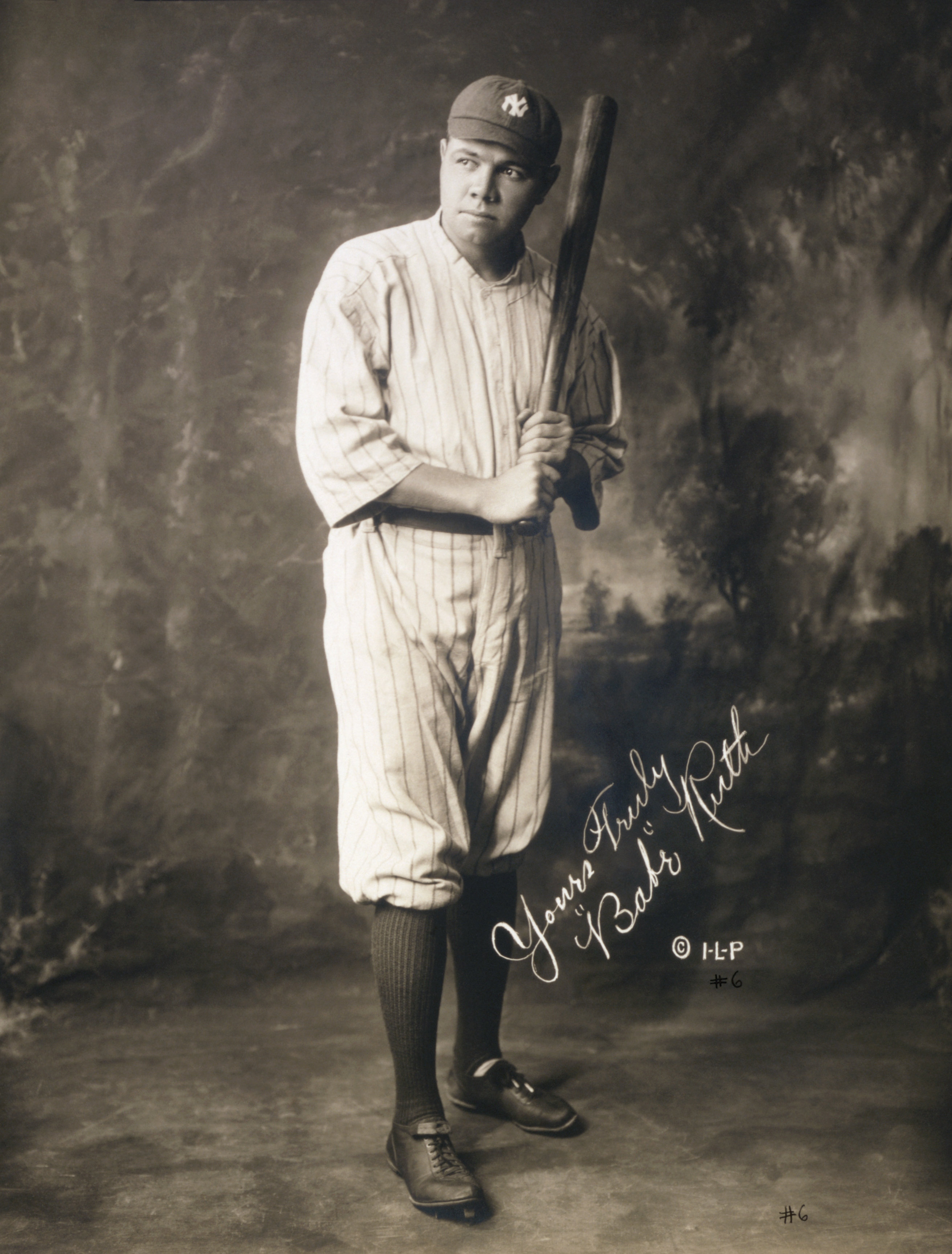|
Hardy Richardson
Abram Harding "Hardy" Richardson (April 21, 1855 – January 14, 1931), also known as "Hardie" and "Old True Blue", was an American professional baseball player whose career spanned from 1875 to 1892 with a brief minor league comeback in 1898. He played 14 seasons in Major League Baseball, playing at every position, including 585 games at second base, 544 games in the outfield, and 178 games at third base. Richardson played for six major league teams, with his longest stretches having been for the Buffalo Bisons (1879–85), Detroit Wolverines (1886–88) and Boston Reds (1890–91). Richardson appeared in 1,334 major league games, compiled a .299 batting average and .437 slugging percentage, and totaled 1,127 runs scored, 1,694 hits, 305 doubles, 126 triples, 73 home runs, 828 RBIs, and 377 bases on balls. From 1881 to 1888, he was part of the "Big Four", a group of renowned batters (the others being Dan Brouthers, Jack Rowe, and Deacon White) who played together in Buff ... [...More Info...] [...Related Items...] OR: [Wikipedia] [Google] [Baidu] |
Infielder
An infielder is a baseball player stationed at one of four defensive "infield" positions on the baseball field. Standard arrangement of positions In a game of baseball, two teams of nine players take turns playing offensive and defensive roles. Although there are many rules to baseball, in general the team playing offense tries to score runs by batting balls into the field that enable runners to make a complete circuit of the four bases. The team playing in the field tries to prevent runs by catching the ball before it hits the ground, by tagging runners with the ball while they are not touching a base, or by throwing the ball to first base before the batter who hit the ball can run from home plate to first base. There are nine defensive positions on a baseball field. The part of the baseball field closest to the batter (shown in the diagram as light brown) is known as the "infield" (as opposed to the "outfield", the part of the field furthest from the batter, shown in the diagr ... [...More Info...] [...Related Items...] OR: [Wikipedia] [Google] [Baidu] |
Deacon White
James Laurie "Deacon" White (December 2, 1847 – July 7, 1939) was an American baseball player who was one of the principal stars during the first two decades of the sport's professional era. The outstanding catcher of the 1870s during baseball's barehanded period, he caught more games than any other player during the decade, and was a major figure on five consecutive championship teams from 1873 to 1877 – three in the National Association (NA), in which he played throughout its five-year existence from 1871 to 1875, and two in the National League (NL), which was formed as the first fully recognized major league in , partially as a result of White and three other stars moving from the powerhouse Boston Red Stockings to the Chicago White Stockings. Although he was already 28 when the NL was established, White played 15 seasons in the major leagues, completing a 23-year career at the top levels of the sport. In 1871, White was the first batter to come to the plate in the ... [...More Info...] [...Related Items...] OR: [Wikipedia] [Google] [Baidu] |
Jack Rowe
John Charles "Jack" Rowe (December 8, 1856 – April 25, 1911) was an American professional baseball player, manager and team owner from 1877 to 1898. He played 12 years in Major League Baseball, as a shortstop (657 games), catcher (298 games), and outfielder (103 games), for four major league clubs. His longest stretches were in the National League with the Buffalo Bisons (1879–1885) and Detroit Wolverines (1886–1888). He was also a player-manager and part owner of the Buffalo Bisons of the Players' League in 1890, and the manager of the Buffalo Bisons (Eastern League) from 1896 to 1898. Rowe appeared in 1,044 major league games, compiled a .286 batting average and .392 slugging percentage, and totaled 764 runs scored, 1,256 hits, 202 doubles, 88 triples, 28 home runs, and 644 RBIs. From 1881 to 1888, he was part of the "Big Four", a group of renowned batters (the others being Dan Brouthers, Hardy Richardson, and Deacon White) who played together in Buffalo and Detroit ... [...More Info...] [...Related Items...] OR: [Wikipedia] [Google] [Baidu] |
Dan Brouthers
Dennis Joseph "Dan" Brouthers (; May 8, 1858 – August 2, 1932) was an American first baseman in Major League Baseball whose career spanned the period from to , with a brief return in . Nicknamed "Big Dan" for his size, he was and weighed , which was large by 19th-century standards. Recognized as the first great slugger in baseball history, and among the greatest sluggers of his era, he held the record for career home runs from to , with his final total of 106 tying for the fourth most of the 19th century. His career slugging percentage of .519 remained the Major League record for a player with at least 4,000 at bats until Ty Cobb edged ahead of him in 1922. At the time of his initial retirement, he also ranked second in career triples (205), and third in runs batted in (1,296) and hits. A dominant hitter during the prime of his career, he led (or was in the top of) the league in most offensive categories, including batting average, runs scored, runs batted in (RBI), on-bas ... [...More Info...] [...Related Items...] OR: [Wikipedia] [Google] [Baidu] |
Base On Balls
A base on balls (BB), also known as a walk, occurs in baseball when a batter receives four pitches that the umpire calls '' balls'', and is in turn awarded first base without the possibility of being called out. The base on balls is defined in Section 2.00 of baseball's Official Rules, and further detail is given in 6.08(a). It is considered a faux pas for a professional player to literally walk to first base; the batter-runner and any advancing runners normally jog on such a play. The term "base on balls" distinguishes a walk from the other manners in which a batter can be awarded first base without liability to be put out (e.g., hit by pitch (HBP), catcher's interference). Though a base on balls, catcher's interference, or a batter hit by a pitched ball all result in the batter (and possibly runners on base) being awarded a base, the term "walk" usually refers only to a base on balls, and not the other methods of reaching base without the bat touching the ball. An important ... [...More Info...] [...Related Items...] OR: [Wikipedia] [Google] [Baidu] |
Run Batted In
A run batted in (RBI; plural RBIs ) is a statistic in baseball and softball that credits a batter for making a play that allows a run to be scored (except in certain situations such as when an error is made on the play). For example, if the batter bats a base hit which allows a teammate on a higher base to reach home and so score a run, then the batter gets credited with an RBI. Before the 1920 Major League Baseball season, runs batted in were not an official baseball statistic. Nevertheless, the RBI statistic was tabulated—unofficially—from 1907 through 1919 by baseball writer Ernie Lanigan, according to the Society for American Baseball Research. Common nicknames for an RBI include "ribby" (or "ribbie"), "rib", and "ribeye". The plural of "RBI" is a matter of "(very) minor controversy" for baseball fans:; it is usually "RBIs", in accordance with the usual practice for pluralizing initialisms in English; however, some sources use "RBI" as the plural, on the basis tha ... [...More Info...] [...Related Items...] OR: [Wikipedia] [Google] [Baidu] |
Home Run
In baseball, a home run (abbreviated HR) is scored when the ball is hit in such a way that the batter is able to circle the bases and reach home plate safely in one play without any errors being committed by the defensive team. A home run is usually achieved by hitting the ball over the outfield fence between the foul poles (or hitting either foul pole) without the ball touching the field. Far less common is the "inside-the-park" home run where the batter reaches home safely while the baseball is in play on the field. When a home run is scored, the batter is credited with a hit and a run scored, and a run batted in ( RBI) for each runner that scores, including himself. Likewise, the pitcher is recorded as having given up a hit and a run, with additional runs charged for each runner that scores other than the batter. Home runs are among the most popular aspects of baseball and, as a result, prolific home run hitters are usually the most popular among fans and consequently ... [...More Info...] [...Related Items...] OR: [Wikipedia] [Google] [Baidu] |
Triple (baseball)
In baseball, a triple is the act of a Batter (baseball), batter safely reaching third base after hitting the ball, with neither the benefit of a fielder's misplay (see error (baseball statistics), error) nor another baserunner, runner being put out on a fielder's choice. A triple is sometimes called a "three-bagger" or "three-base hit". For baseball statistics, statistical and baseball scorekeeping, scorekeeping purposes it is denoted by 3B. Triples have become somewhat rare in Major League Baseball, less common than both the Double (baseball), double and the home run. This is because it requires a ball to be hit solidly to a distant part of the field (ordinarily a line drive or Fly ball (baseball), fly ball near the Foul line (baseball), foul line closest to Right fielder, right field), or the ball to take an irregular bounce in the outfield, usually against the wall, away from a outfielder, fielder. It also requires the batter's team to have a good strategic reason for wanting ... [...More Info...] [...Related Items...] OR: [Wikipedia] [Google] [Baidu] |
Double (baseball)
In baseball, a double is the act of a batter striking the pitched ball and safely reaching second base without being called out by the umpire, without the benefit of a fielder's misplay (see error) or another runner being put out on a fielder's choice. A double is a type of hit (the others being the single, triple and home run) and is sometimes called a "two-bagger" or "two-base hit". For statistical and scorekeeping purposes it is denoted by 2B. Description Typically, a double is a well-hit ball into the outfield that finds the "gap" between the center fielder and one of the corner outfielders, bounces off the outfield wall and down into the field of play, or is hit up one of the two foul lines. To hit many doubles, a batter must have decent hitting skill and power; it also helps to run well enough to beat an outfield throw. Doubles typically drive in runs from third base, second base, and even from first base at times. When total bases and slugging percentages ... [...More Info...] [...Related Items...] OR: [Wikipedia] [Google] [Baidu] |
Run (baseball)
In baseball, a run is scored when a player advances around first, second and third base and returns safely to home plate, touching the bases in that order, before three outs are recorded and all obligations to reach base safely on batted balls are met or assured. A player may score by hitting a home run or by any combination of plays that puts him safely "on base" (that is, on first, second, or third) as a runner and subsequently brings him home. Once a player has scored a run, they may not attempt to score another run until their next turn to bat. The object of the game is for a team to score more runs than its opponent. The Official Baseball Rules hold that if the third out of an inning is a force out of a runner advancing to any base then, even if another baserunner crosses home plate before that force out is made, his run does not count. However, if the third out is not a force out, but a tag out, then if that other baserunner crosses home plate before that tag out is ma ... [...More Info...] [...Related Items...] OR: [Wikipedia] [Google] [Baidu] |
Slugging Percentage
In baseball statistics, slugging percentage (SLG) is a measure of the batting productivity of a hitter. It is calculated as total bases divided by at bats, through the following formula, where ''AB'' is the number of at bats for a given player, and ''1B'', ''2B'', ''3B'', and ''HR'' are the number of singles, doubles, triples, and home runs, respectively: : \mathrm = \frac Unlike batting average, slugging percentage gives more weight to extra-base hits such as doubles and home runs, relative to singles. Plate appearances resulting in walks, hit-by-pitches, catcher's interference, and sacrifice bunts or flies are specifically excluded from this calculation, as such an appearance is not counted as an at bat (these are not factored into batting average either). The name is a misnomer, as the statistic is not a percentage but an average of how many bases a player achieves per at bat. It is a scale of measure whose computed value is a number from 0 to 4. This might not be r ... [...More Info...] [...Related Items...] OR: [Wikipedia] [Google] [Baidu] |
.jpg)







.jpg)
